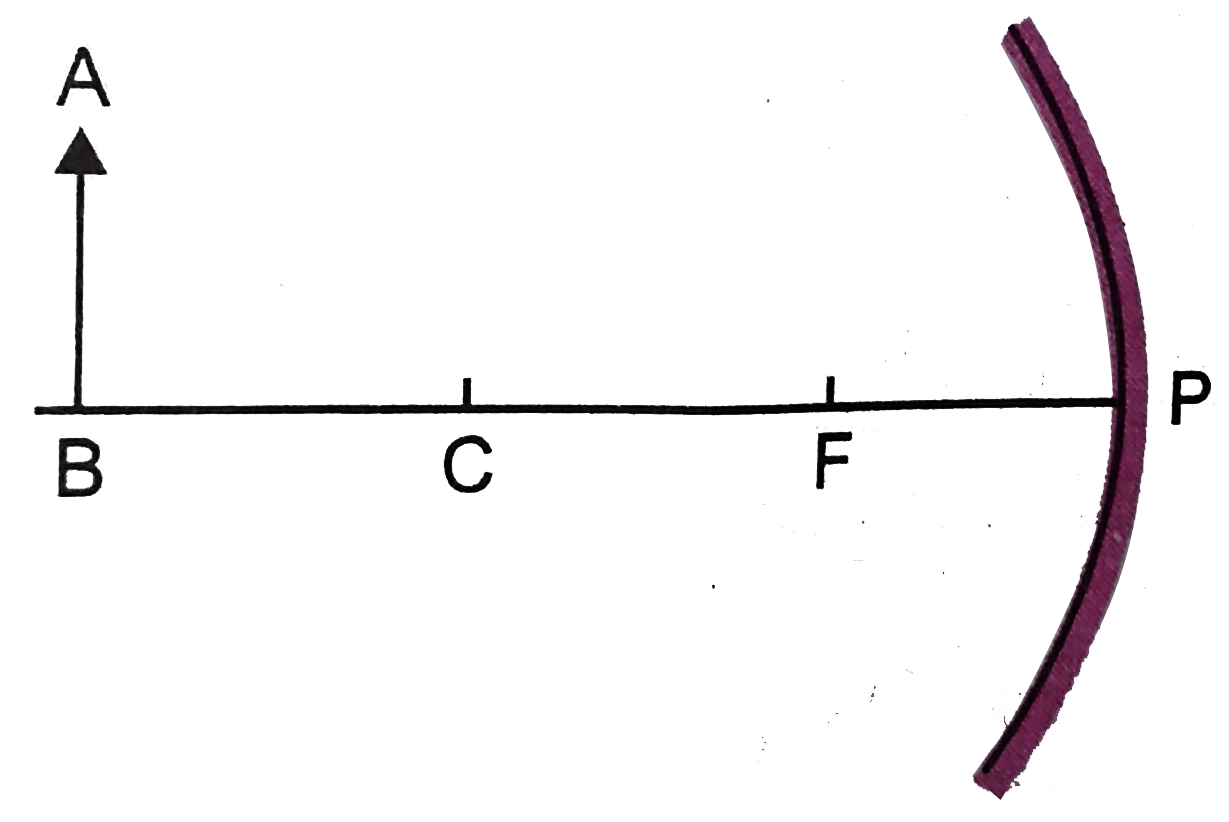A mobile phone lies along the principal axis of a concave mirror as shown in Fig. Show by suitable diagram, the formation of its image. Explain why the magnification is not uniform, and distortion will occur depending on the location of the mobile with respect to the mirror.

The formation of image of the cellphone by concave mirror is shown in Fig. The part of the set which is at C will form image of same size at C only. In Fig., B'C=BC. The part of the set which lies between CandF will form enlarged image beyond C as shown. Obviously, the magnification of each part of mobile cannot be uniform on account of different locations. That is why distortion occurs in the image.
Topper's Solved these Questions
- RAY OPTICSBOOK - PRADEEPCHAPTER - RAY OPTICSEXERCISE - Very Short (a)
23 Videos
- RAY OPTICSBOOK - PRADEEPCHAPTER - RAY OPTICSEXERCISE - Short Answer(a)
14 Videos
- RAY OPTICSBOOK - PRADEEPCHAPTER - RAY OPTICSEXERCISE - Solved Example(a)
14 Videos
- PROPERTIES OF BULK MATTERBOOK - PRADEEPCHAPTER - PROPERTIES OF BULK MATTEREXERCISE - Multiple choice questions
7 Videos
- SYSTEMS OF PARTICLES AND ROTATIONAL MOTIONBOOK - PRADEEPCHAPTER - SYSTEMS OF PARTICLES AND ROTATIONAL MOTIONEXERCISE - Assertion- Reason Type questions
20 Videos
Similar Questions
A mobile phone lies along the principal axis of a concave mirror as shown in Fig. Show by suitable diagram, the formation of its image. Explain why the magnification is not uniform, and distortion will occur depending on the location of the mobile with respect to the mirror.

View Solution(a) A mobile phone lies along the principal axis of a concave mirror. Show by suitable diagram the formation of its image. Explain, why the magnification is not uniform.
(b) Suppose the lower half of the concave mirror's reflecting surface is covered with an opaque material, what effect this will have on the image of the object ? Explain.
View Solution
Knowledge Check
A rod of length 30 cm lies along the principal axis of a concave mirror of focal length 10 cm in such a way that its end closer to the pole is 20 cm away from the mirror. The length of the image is
A10 cmB15 cmC2.5 cmD7.5 cmA rod of length 10 cm lies along the principle axis of a concave mirror of focal length 10 cm in such a way that its and closer to the pole is 20 cm away fro the mirror. The length of the image is
A10 cmB15 cmC2.5 cmD5 cmAn infinitely long rod lies along the axis of a concave mirror of focal length f. The near end of the rod is distance u>f from the mirror. Its image will have length
Aufu−fBufu+fCf2u+fDf2u−f
A thin stick of length f/5 placed along the principal axis of a concave mirror of focal length f such that its image is real and elongated just touch the stick. What is the magnification?
View SolutionA point light source lies on the principal axis of concave spherical mirror with radius of curvature 160 cm. Its image appears to be back of the mirror at a distance of 70 cm from mirror. Determine the location of the light source.
View SolutionAn object AB is kept in front of a concave mirror as shown in Fig.

(i) Complete the ray diagram showing the image formation of the object.
(ii) How will the position and intensity of the image be affected surface is painted black ?
View SolutionA rod of length 10 cm lies along the principal axis of a concave mirror of focal length 10 cm in such a way that the end closer to the pole is 20 cm away from it. Find the length of the image.
View SolutionAn infinitely long rod lies along the axis of a concave mirror of focal length f. The near end of the rod is distance u>f from the mirror. Its image will have length
View Solution
